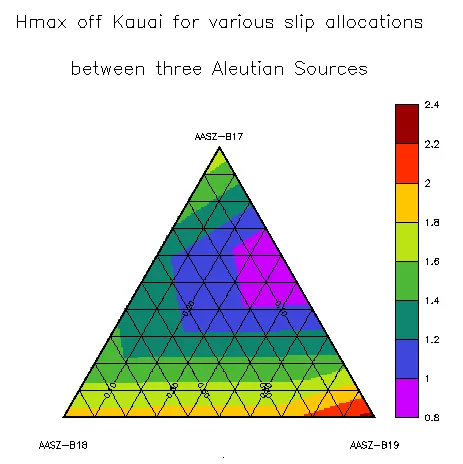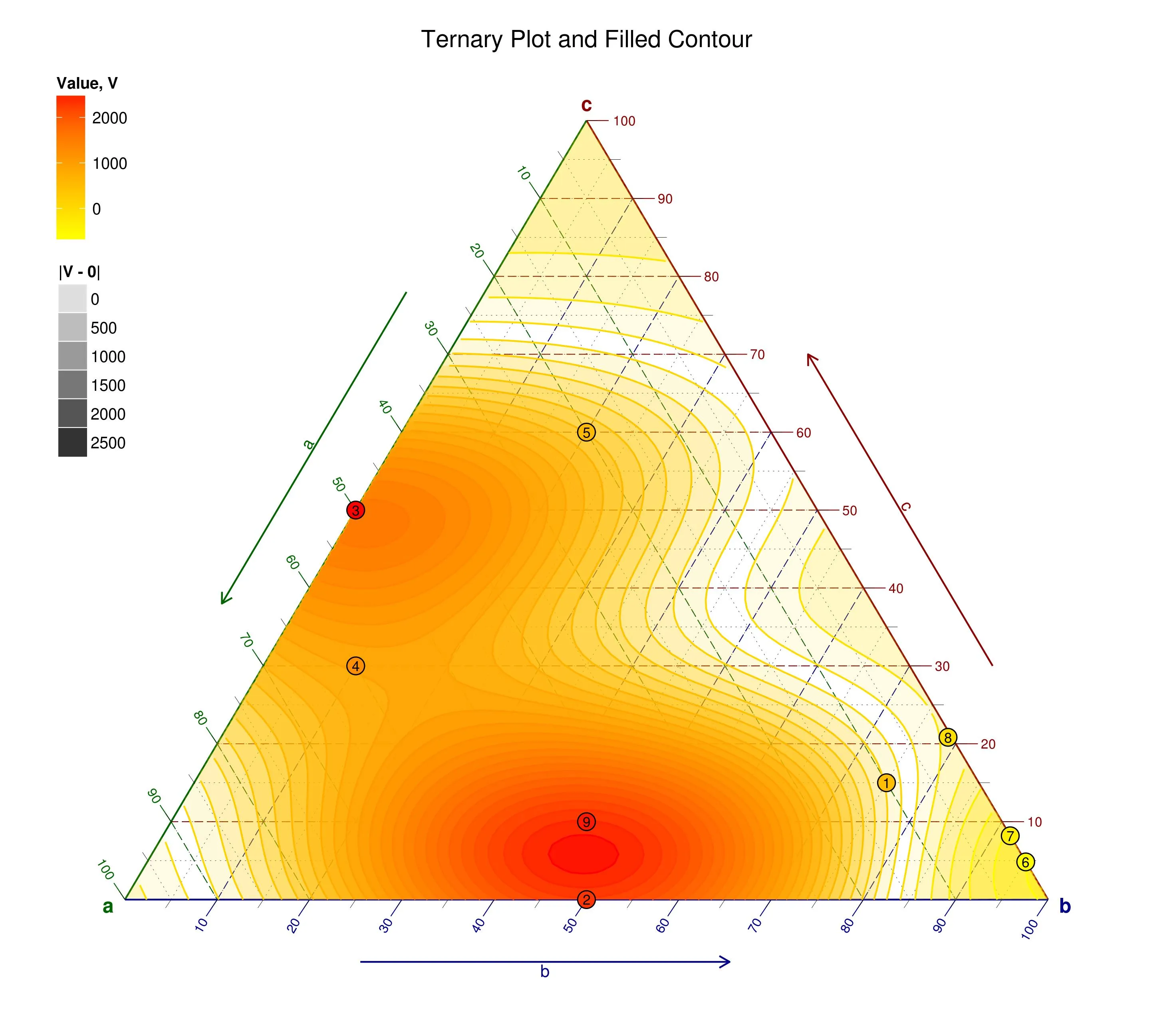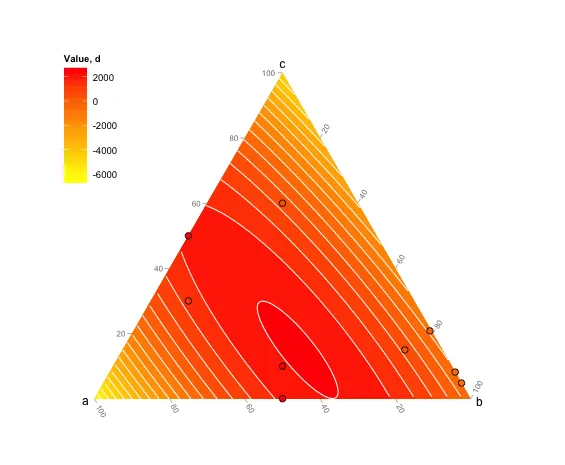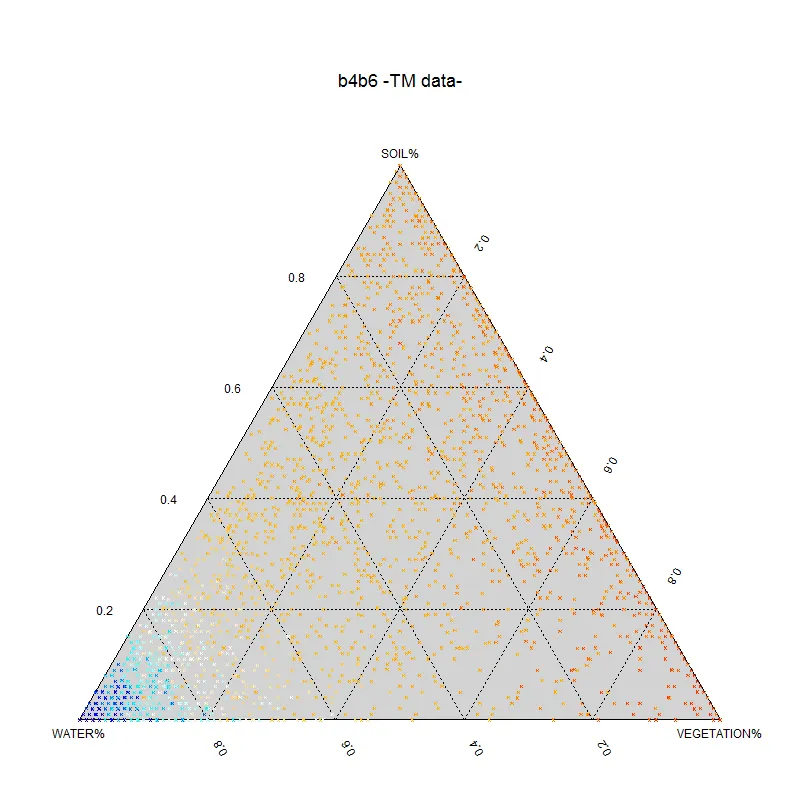这可能不是最优雅的方法,但它能够工作(从头开始,而且没有使用ternaryplot,因为我无法弄清楚如何做到这一点)。
a<- c (0.1, 0.5, 0.5, 0.6, 0.2, 0, 0, 0.004166667, 0.45)
b<- c (0.75,0.5,0,0.1,0.2,0.951612903,0.918103448,0.7875,0.45)
c<- c (0.15,0,0.5,0.3,0.6,0.048387097,0.081896552,0.208333333,0.1)
d<- c (500,2324.90,2551.44,1244.50, 551.22,-644.20,-377.17,-100, 2493.04)
df<- data.frame (a, b, c)
plot(NA,NA,xlim=c(0,1),ylim=c(0,sqrt(3)/2),asp=1,bty="n",axes=F,xlab="",ylab="")
segments(0,0,0.5,sqrt(3)/2)
segments(0.5,sqrt(3)/2,1,0)
segments(1,0,0,0)
text(0.5,(sqrt(3)/2),"c", pos=3)
text(0,0,"a", pos=1)
text(1,0,"b", pos=1)
tern2cart <- function(coord){
coord[1]->x
coord[2]->y
coord[3]->z
x+y+z -> tot
x/tot -> x
y/tot -> y
z/tot -> z
(2*y + z)/(2*(x+y+z)) -> x1
sqrt(3)*z/(2*(x+y+z)) -> y1
return(c(x1,y1))
}
t(apply(df,1,tern2cart)) -> tern
resolution <- 0.001
require(akima)
interp(tern[,1],tern[,2],z=d, xo=seq(0,1,by=resolution), yo=seq(0,1,by=resolution)) -> tern.grid
image(tern.grid,breaks=c(-1000,0,500,1000,1500,2000,3000),col=rev(heat.colors(6)),add=T)
contour(tern.grid,levels=c(-1000,0,500,1000,1500,2000,3000),add=T)
points(tern,pch=19)






RSiteSearch("三元轮廓")看看是否有帮助?另外,使用library("sos"); findFn("三元轮廓")。 - Ben Bolker